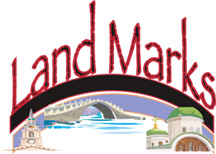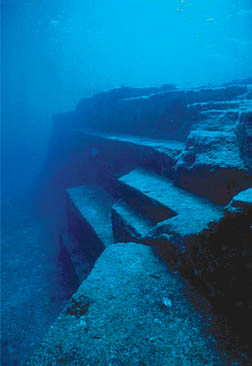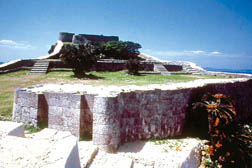|
observer |
|
|
|
|
|
OTHER LINKS |

|

|

|
|
|
|
|
This opportunity was afforded not just to me, but to my entire family, Robin, our guide bird, and also to Suzeme's family.
We visited the Yonaguni Islands and Okinawa, where the monuments are located.
We wore special diving kits with goggles, and took torches with us so that we could see the monuments clearly. It was fairly dark under the sea, but really beautiful. The monuments were huge and looked like different parts of a city. "These are believed to have been built in 10,000 BC," said Robin.
"That means, they are even older than the Pyramids in Egypt, which were built in 5000 BC". He added that Japanese archaeologists believe these to be the oldest buildings in the world. According to Robin, they believe these castles, roads, and other buildings are the remnants of a rich civilization.
These monuments are thought to have been built on land, probably during the ice age, which was featured in the Junior Observer Geo Facts page sometime ago. Due to the melting of the ice and the rising of sea levels, this land must have gone under water and the civilization may have been buried.
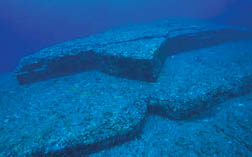
"Researchers had been able to collect relics, stone tools, relief carvings of animal figures, lithography (printing from a design on a smooth surface) with characters carved and other direct evidence that humans had existed here," said Robin.
When I was small, Papa Bird used to tell me bed-time stories, most of which were folk tales. I remember him telling me a Japanese folklore, about a person named Taro Urashima. He had rescued a big turtle, which had taken him to an underwater castle. Viewing this site, I remembered that story and thought to myself that the story would have had some kind of connection with these monuments.
|
|
The monuments looked like pyramids, but also had the touch of a ceremonial platform. Stone terraces, right angled blocks, walls and stone circles were there. In the ceremonial platform, researchers had found holes, which they suspect might be the post holes that supported a wooden structure. Some of the monuments were of rather unusual shape, such as the massive stone steps, which were all perpendicular. I have never seen such angles before.
"Some people think that this is a stylised turtle carved out of a rock," said Robin, "but I can't figure out whether that is true or not, because I find it to be too huge."
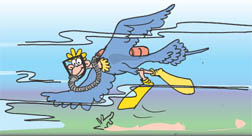
The Yonaguni site was fairly near the shore, so there was a heavy surge (the up and down motion of waves) as well as swift currents. Robin tried to scare me saying that there are sharks in the area, but I was brave not to listen to him.
After having a thorough inspection of the place, we got ready to leave. Suzeme's father, who had been thinking for a while, came up with another idea. When he was flying around, he had seen the ruins of a castle in Okinawa, this time on land. According to him, these monuments under water bear the same features of the monument in Okinawa. So, it could be that both sites belong to the same civilization. Naturally, we visited the Okinawa site as well.
Japanese archaeologists are still looking for facts to prove what exactly the site may have been. So, in the future, we may be able to hear more interesting stories about the place. Let's wait for that!
After a long diving session, I had caught a cold and fever, and am now under medication. Our family decided to continue with our travels as soon as I feel better. Till then, bye!
